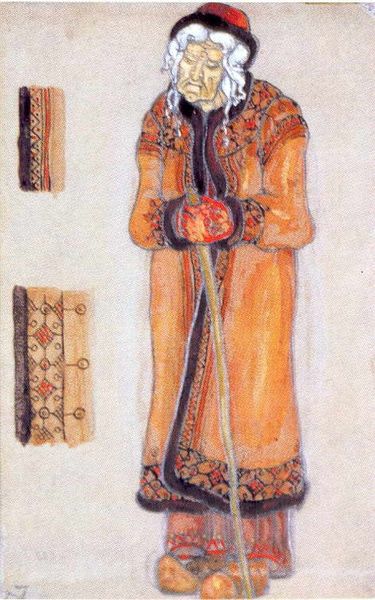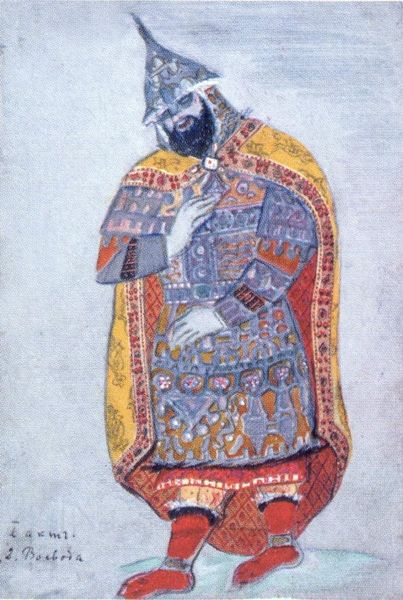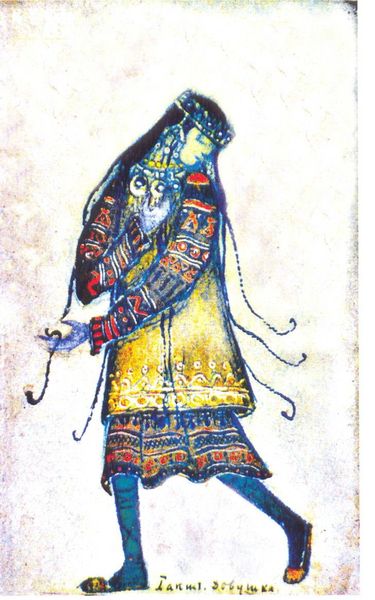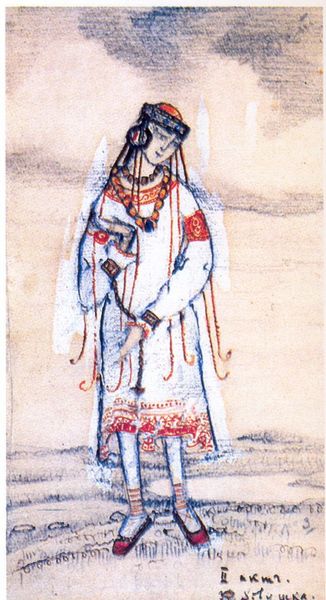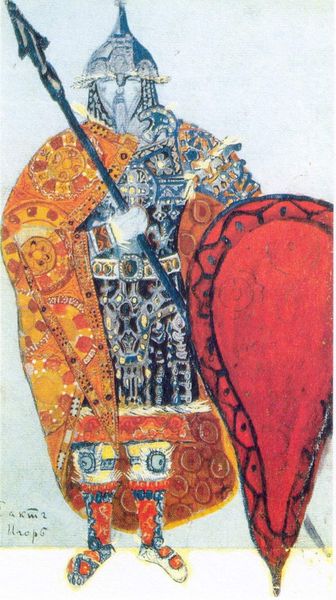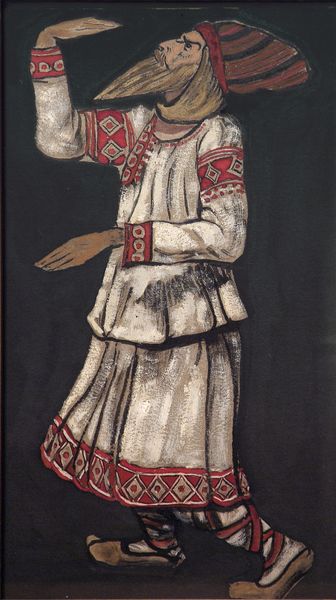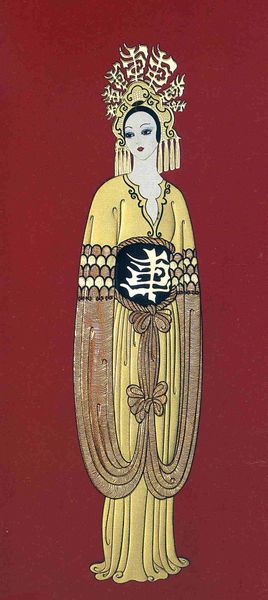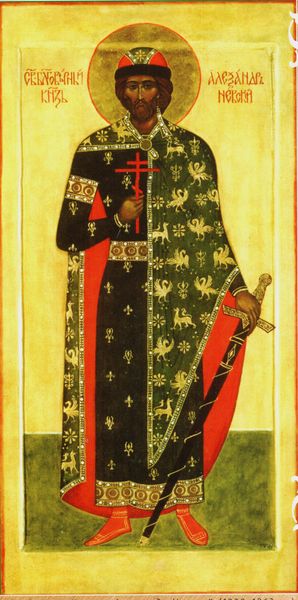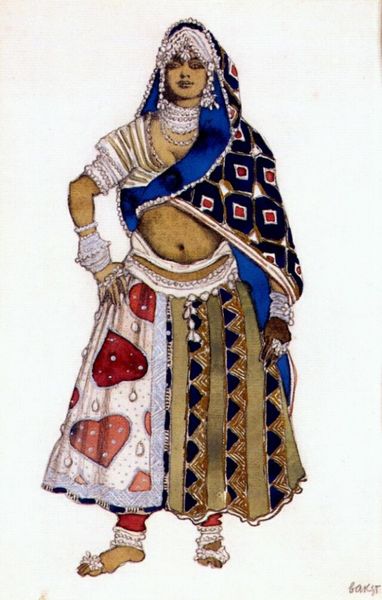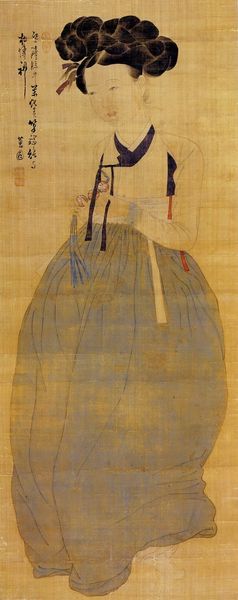
painting, watercolor
#
portrait
#
painting
#
figuration
#
oil painting
#
watercolor
#
naive art
#
costume
#
russian-avant-garde
#
painting art
#
watercolur painting
Copyright: Public domain
Curator: Nicholas Roerich's "Yaroslavna," painted in 1913, offers a striking figuration in the Russian Avant-Garde style, don't you think? Editor: Absolutely. The first thing that grabs me is the intricate patterning and the sheer density of the textures, almost overwhelming the figure. The material presence is quite pronounced. Curator: The patterns create complex repetitions and variations that draw the eye, moving it across the canvas. Notice how the artist uses concentric circles and contrasting hues of red, yellow and blue to activate a visual rhythm. Editor: Right, and considering the date, I immediately start thinking about textile production in Russia at the time, the local artisanal traditions influencing the work, and perhaps Roerich consciously elevating "craft" traditions. Was this a piece designed as a costume, do we know? Curator: Indeed, Roerich's interest in stage design makes that likely, the stylized form pointing toward a theatrical purpose. The figure embodies a kind of tragic majesty, conveyed through the restrained pose and subtle use of color symbolism. Editor: So it is form meeting function and feeding back into a particular cultural identity or historical narrative. Are there any visible traces of how this was painted or any indication of the watercolor medium’s limitations? I am interested in seeing what it looks like to work with these fine materials. Curator: The visible strokes create a layering effect that adds depth to the costume's rendering. Despite the work's surface-level ornamental beauty, the sitter’s sad expression offers a stark contrast, making it more than a superficial rendering. This is an intentional composition of form to emote meaning and presence. Editor: Precisely, this is an opportunity for understanding how labor and production intersect with artistic value, rather than isolating beauty from function. Ultimately, examining materials tells its own silent story. Curator: A compelling piece both formally and culturally, revealing visual patterns of narrative that linger in one’s mind. Editor: Roerich definitely prompts us to consider these rich points of intersection of labor and the narrative it supports.
Comments
No comments
Be the first to comment and join the conversation on the ultimate creative platform.
